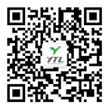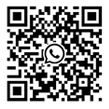1. Understanding Electric Meters
To effectively manage our energy consumption and understand our electricity bills, it's crucial to grasp the fundamental role of electric meters. These unassuming devices are the gatekeepers of our household or business electricity usage, providing the vital data that allows utility companies to accurately charge for the power we consume.
A. Definition and Purpose of Electric Meters
An electric meter, also known as an electricity meter, energy meter, or kilowatt-hour meter, is a device that measures the amount of electrical energy consumed by a residence, business, or an electrically powered device. Its primary purpose is to provide a precise record of energy usage, typically measured in kilowatt-hours (kWh), over a period of time. This measurement forms the basis for billing by electricity providers. Without electric meters, it would be impossible for utility companies to fairly charge customers based on their actual consumption, leading to arbitrary pricing or the need for flat-rate billing, which could be inefficient and inequitable. Beyond billing, electric meters also serve as a crucial tool for energy management, allowing consumers and businesses to monitor their usage and identify opportunities for energy savings.
B. Types of Electric Meters
Over time, electric meter technology has evolved significantly, leading to different types of meters that offer varying levels of functionality and data reporting. The most common types include analog, digital, and smart meters.
Analog Electric Meters (Electromechanical Meters): These are the traditional type of electric meters, often recognized by their spinning disc and a series of dials. They operate on an electromechanical principle, using the interaction between magnetic fields generated by current and voltage to rotate an aluminum disc. The speed of the disc's rotation is proportional to the amount of power being consumed. The energy usage is then read from a set of cumulative dials that resemble odometers.
How they work: When electricity flows through the meter, it creates a magnetic field that interacts with a conductive disc, causing it to rotate. The number of rotations is directly proportional to the energy consumed. A gear train connects the disc to the dials, which display the total kilowatt-hours used.
Characteristics: Known for their durability and longevity, but they require manual reading by utility personnel, making billing less frequent and real-time monitoring impossible for consumers. They also lack advanced features like remote disconnection or power quality monitoring.
Digital Electric Meters (Electronic Meters): Representing a significant advancement, digital meters replaced the mechanical components with electronic circuits. These meters use integrated circuits to measure voltage and current, calculate power, and then integrate that power over time to determine energy consumption. The reading is displayed on a liquid crystal display (LCD) or LED screen.
How they work: Electronic sensors inside the meter convert analog electrical signals into digital data. Microprocessors then process this data to accurately calculate energy consumption. The accumulated usage is shown digitally.
Characteristics: Offer more accurate readings than analog meters and are less prone to mechanical wear. They often have internal memory to store usage data for certain periods and can sometimes detect tampering. While they still often require manual reading, some digital meters can be equipped with communication modules for remote data collection.
Smart Electric Meters (Advanced Metering Infrastructure - AMI): These are the latest generation of electric meters and are a cornerstone of modern smart grids. Smart meters build upon the digital meter's electronic measurement capabilities but add two-way communication functionality. This allows them to send usage data to the utility automatically and receive commands from the utility, all without human intervention.
How they work: In addition to measuring electricity consumption electronically, smart meters incorporate communication technologies (e.g., cellular, radio frequency, power line communication) to transmit data to the utility's central system at regular intervals (e.g., hourly, daily). They can also receive information from the utility, such as pricing signals or remote connect/disconnect commands.
Characteristics: The key benefits of smart meters lie in their communication capabilities. They enable real-time or near real-time energy monitoring for consumers, facilitate more accurate and frequent billing, support time-of-use tariffs, allow for remote service management, and contribute to grid stability and efficiency by providing utilities with granular data on electricity demand.
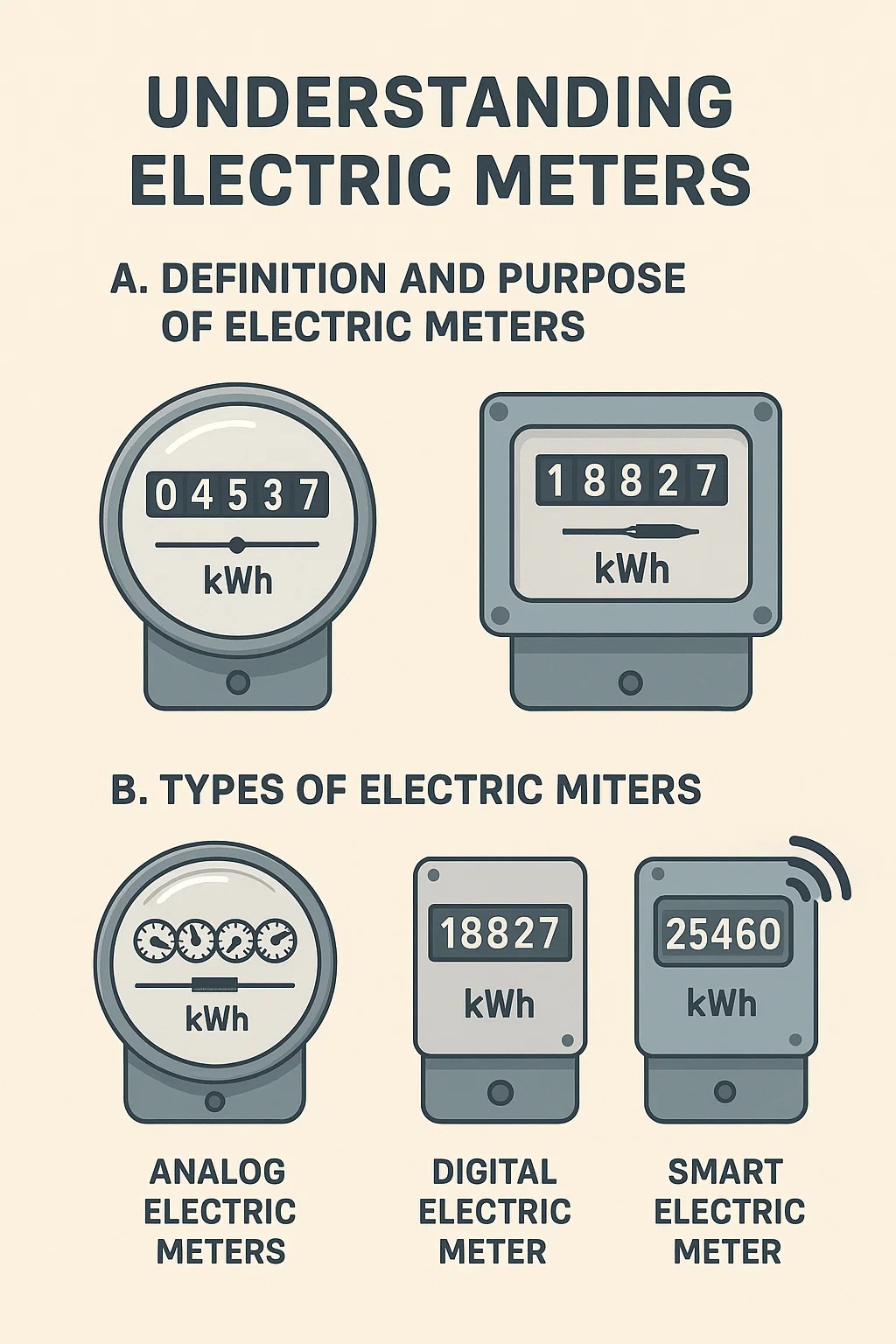
2. How Electric Meters Work
While the different types of electric meters vary in their internal mechanisms and communication methods, the fundamental principle behind their operation remains consistent: they all measure the flow of electrical energy. Understanding this process, from the initial measurement of voltage and current to the transmission of data, demystifies how your electricity usage is recorded and ultimately billed.
A. The Measurement Process (Voltage, Current, and Power)
At its core, an electric meter measures electrical energy, which is the total amount of power consumed over a specific period. This measurement is derived from two fundamental electrical quantities: voltage and current.
Voltage (V): This is the electrical potential difference, often thought of as the "pressure" that pushes electrons through a circuit. In most homes, the standard voltage is typically around 120V or 240V, depending on the appliance and circuit. The meter measures the voltage supplied to your premises.
Current (I): This is the flow rate of electric charge, essentially how many electrons are passing a given point in a circuit per second. When you turn on an appliance, it draws current. The meter measures the amount of current flowing into your property.
Power (P): Power is the rate at which electrical energy is consumed or produced. It is the product of voltage and current. The standard unit for power is the watt (W).
The basic formula for power is: P=V×I
For alternating current (AC) circuits, which are standard for household electricity, the calculation is slightly more complex, involving a power factor that accounts for the phase difference between voltage and current. However, the meter's internal circuitry handles these complexities to provide an accurate power measurement.
How the Meter Connects the Dots:
The electric meter is connected to your home's electrical system in such a way that all the electricity flowing into your property passes through it.
Measuring Instantaneous Power: The meter continuously measures the instantaneous voltage and current. It then calculates the instantaneous power being consumed at any given moment.
Integrating Over Time: To get the total energy consumed, the meter integrates (sums up) this instantaneous power over time. The longer an appliance is on and the more power it draws, the greater the total energy consumed.
Kilowatt-Hours (kWh): The standard unit for billing electrical energy is the kilowatt-hour (kWh). One kilowatt-hour is equivalent to using 1,000 watts of power for one hour. For example, a 100-watt light bulb left on for 10 hours consumes 1 kWh of energy (100 W * 10 hours = 1000 Wh = 1 kWh). The meter's display (dials or digital screen) shows the cumulative total of kWh used since its last reset or last reading for billing purposes.
B. Data Transmission Methods (Manual Reading vs. Remote Reading)
Once the electric meter has measured the energy consumed, that data needs to be collected by the utility company for billing and operational purposes. The method of data transmission has evolved significantly with meter technology.
Manual Reading: This is the traditional method, predominantly used for analog and some older digital meters.
- Process: A utility company employee, known as a meter reader, physically visits each meter location. They visually inspect the dials on an analog meter or the digital display on a digital meter and record the current reading. This reading is then entered into a handheld device or manually transcribed, which is later submitted to the utility's billing system.
- Characteristics: This method is labor-intensive, time-consuming, and prone to human error in reading or transcription. Readings are typically taken once a month, which means billing is based on a snapshot of usage, not real-time data. It also prevents the utility from obtaining more frequent data for grid management or outage detection.
Remote Reading (Automated Meter Reading - AMR & Advanced Metering Infrastructure - AMI): This is the modern approach, primarily associated with digital meters equipped with communication modules and, most notably, with smart meters. Remote reading eliminates the need for manual site visits.
- Automated Meter Reading (AMR): This is a one-way communication system where meters broadcast their readings to a nearby receiver. This receiver could be located on a utility vehicle driving through a neighborhood (drive-by reading) or at fixed collection points. The data is then transmitted to the utility's central system. While it automates the collection, it's still primarily a one-way data flow.
- Advanced Metering Infrastructure (AMI - Two-Way Communication): This represents the most advanced form of remote reading, characteristic of smart meters. AMI systems enable two-way communication between the meter and the utility.
-- Process: Smart meters use various communication technologies (e.g., cellular networks, radio frequency mesh networks, power line communication) to automatically send detailed usage data (e.g., hourly or even 15-minute intervals) to the utility's data collection system. Critically, the utility can also send commands or information back to the meter, such as remote connect/disconnect signals, firmware updates, or pricing signals.
-- Characteristics: AMI provides utilities with near real-time data, enabling more accurate and flexible billing (e.g., time-of-use rates), faster outage detection and restoration, improved grid management, and the ability to offer consumers real-time energy consumption feedback. For consumers, it means no more estimated bills, and often access to online portals showing their detailed energy usage patterns.
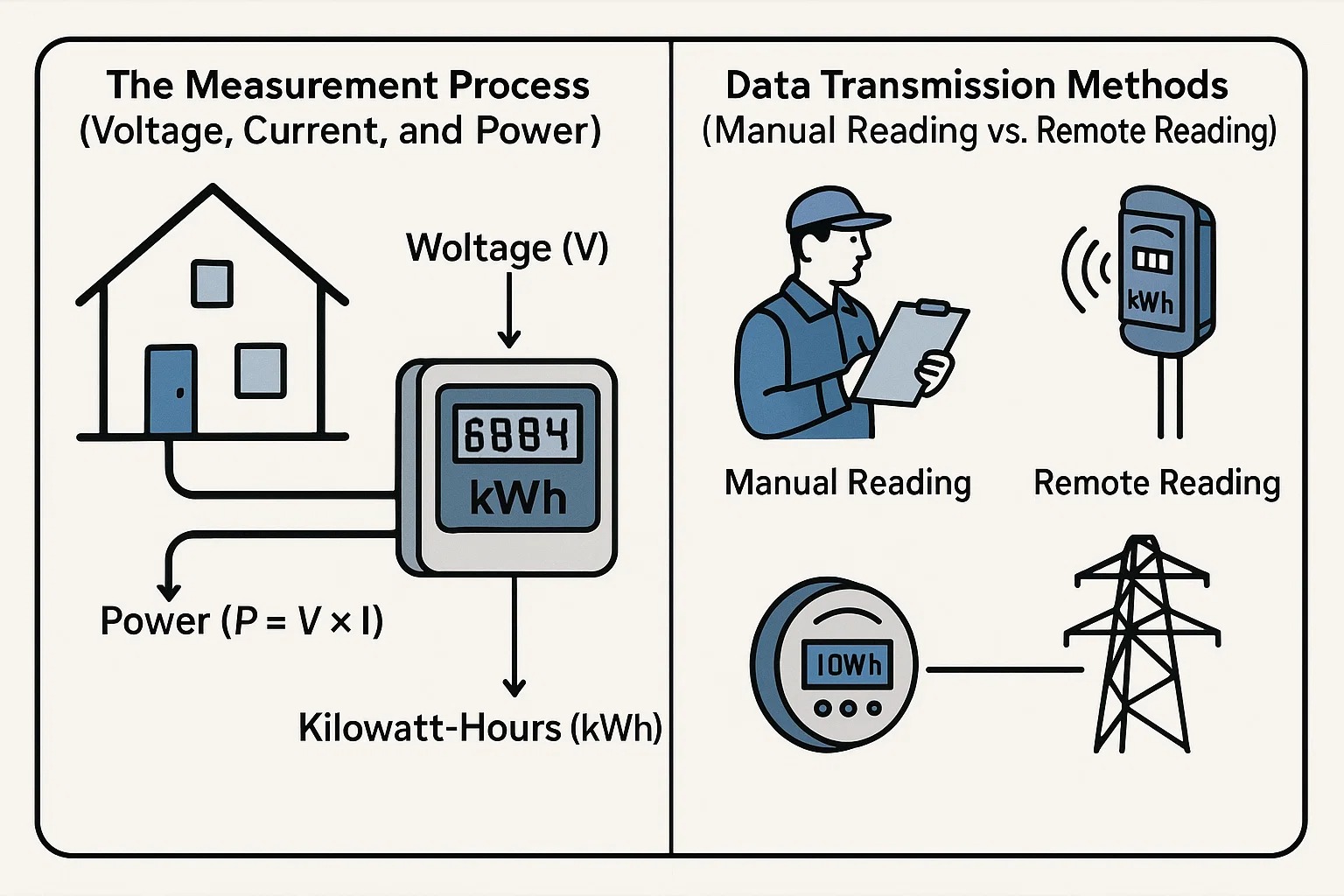
3. Benefits of Smart Electric Meters
The advent of smart electric meters has revolutionized the way electricity is measured, billed, and consumed. Moving beyond the basic functionality of their analog and even early digital predecessors, smart meters leverage two-way communication to offer a multitude of advantages for both consumers and utility companies. These benefits primarily stem from their ability to provide granular, real-time data and facilitate efficient communication.
A. Real-time Energy Monitoring
One of the most significant advantages of smart electric meters is their capacity for real-time energy monitoring. Unlike traditional meters that only provide a cumulative reading at the end of a billing cycle, smart meters continuously measure and record energy consumption, often at intervals as frequent as every 15 minutes or even more rapidly. This detailed data is then transmitted to the utility and often made accessible to the consumer.
- Empowering Consumers: For consumers, real-time monitoring means a clearer, more immediate understanding of their energy usage patterns. Through online portals, mobile apps, or in-home displays connected to their smart meter, individuals can see how much electricity they are using at any given moment, or throughout the day. This visibility allows them to:
-- Identify Energy Hogs: Pinpoint which appliances or activities consume the most electricity. If a sudden spike in usage is observed, it can prompt an investigation into why that might be happening (e.g., an old refrigerator running inefficiently, a forgotten appliance left on).
-- Adjust Habits: Make informed decisions about when to use high-consumption appliances. For example, knowing that electricity might be cheaper during off-peak hours (as part of a time-of-use tariff) can encourage running dishwashers or laundry machines later in the evening.
-- Set Goals and Track Progress: Monitor their energy-saving efforts and see the immediate impact of changes in their behavior or the adoption of energy-efficient appliances.
- Benefits for Utilities and the Grid: Real-time data from smart meters is invaluable for utility companies in managing the electricity grid more effectively.
-- Demand Response Programs: Utilities can use this data to implement demand response programs, encouraging consumers to reduce consumption during peak demand times, thus preventing strain on the grid and potentially avoiding costly infrastructure upgrades.
-- Outage Detection and Management: Smart meters can instantly report outages, allowing utilities to pinpoint the location of power failures more quickly and restore service faster. They can also help confirm when power has been restored.
-- Load Balancing and Forecasting: Detailed usage data helps utilities forecast demand more accurately, enabling better load balancing across the grid and more efficient power generation and distribution.
B. Enhanced Billing Accuracy and Efficiency
The communication capabilities of smart meters lead to substantial improvements in the accuracy and efficiency of electricity billing processes.
- Elimination of Estimated Bills: With traditional meters, if a meter reader cannot access the meter, utilities often resort to estimating bills based on past usage. This can lead to significant discrepancies and customer dissatisfaction. Smart meters automatically transmit actual usage data, virtually eliminating the need for estimated bills and ensuring customers are charged precisely for the electricity they consume.
- More Frequent and Detailed Billing Information: Instead of a single monthly reading, smart meters can provide daily or even hourly consumption data. This allows for more frequent and transparent billing, giving consumers a better sense of their ongoing costs. Some utilities offer access to their energy usage data that allows customers to predict their bill throughout the month.
- Support for Time-of-Use (TOU) Rates: Smart meters are essential for implementing Time-of-Use (TOU) tariffs. Under TOU rates, the price of electricity varies depending on the time of day, day of the week, or season, reflecting the higher cost of generating and delivering electricity during periods of peak demand.
-- Fairer Pricing: TOU rates allow utilities to charge more accurately for electricity based on the actual cost of supply at different times, which is more equitable.
-- Incentivizing Off-Peak Consumption: By making off-peak electricity cheaper, TOU rates encourage consumers to shift their energy-intensive activities to periods of lower demand, reducing overall grid stress and potentially lowering their own electricity bills. Smart meters precisely track consumption during different rate periods, making TOU billing feasible.
- Improved Dispute Resolution: In the event of a billing dispute, the granular data provided by a smart meter can offer clear evidence of actual consumption, making it easier to resolve disagreements between customers and the utility.
- Reduced Operational Costs for Utilities: Automating meter readings significantly reduces labor costs associated with manual meter reading and the administrative overhead of handling estimated bills and related customer service inquiries. This efficiency can translate into long-term savings for utilities, which may indirectly benefit consumers.
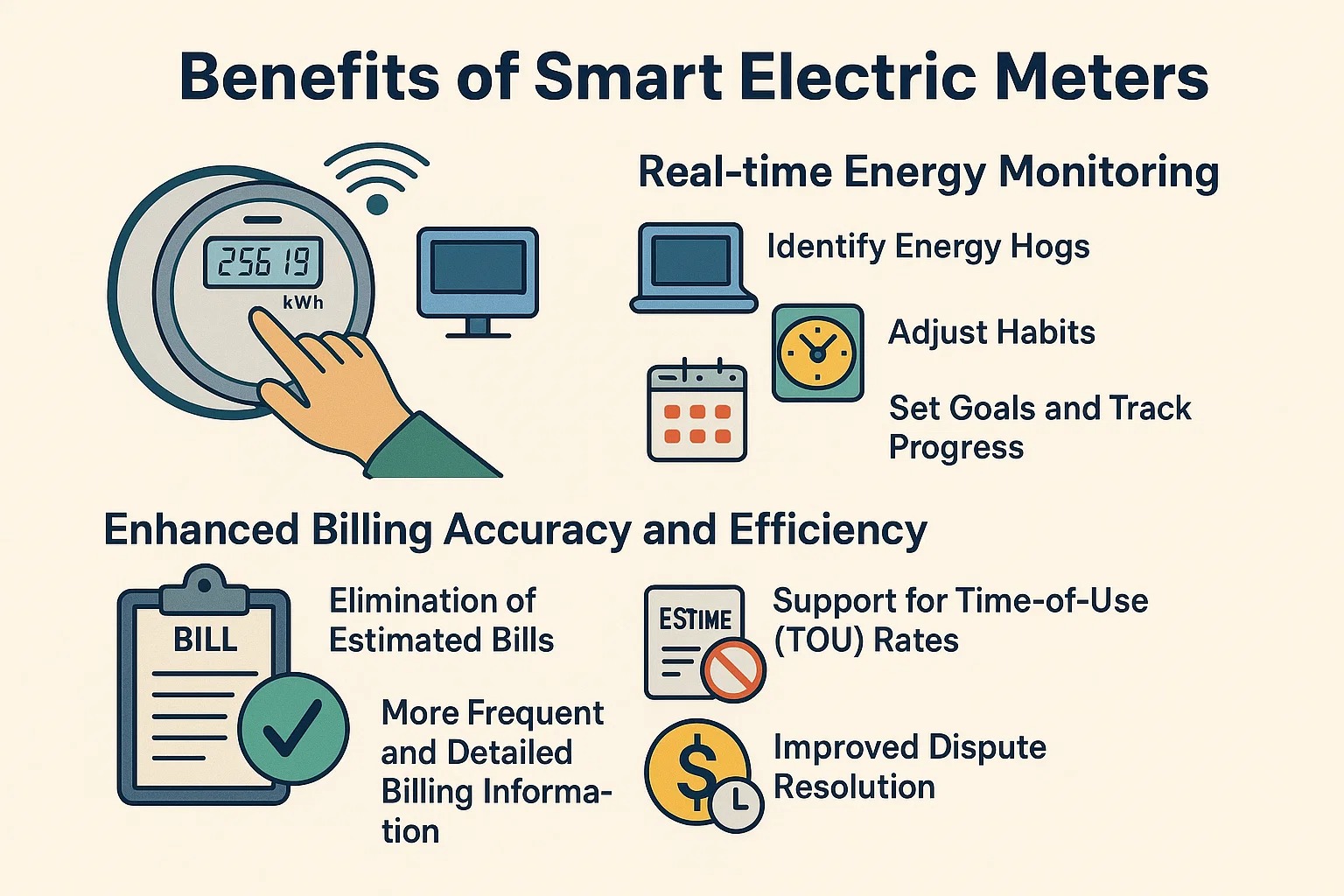
4. Common Questions About Electric Meters
Understanding how electric meters work and what to do when questions or concerns arise is crucial for every electricity consumer. Here, we address two of the most common questions: how to read your meter and what steps to take if you suspect an issue with its accuracy.
A. How to Read Your Electric Meter
Reading your electric meter allows you to track your energy consumption independently and compare it against your utility bills. The method varies slightly depending on whether you have an analog (dial) meter or a digital meter. Smart meters generally provide readings directly to the utility and often offer consumer access via online portals or in-home displays, making manual reading less common but still possible.
- Reading an Analog (Dial) Electric Meter:
Analog meters typically have four or five small dials that resemble clocks, each with numbers from 0 to 9. The needles on these dials rotate clockwise or counter-clockwise.
-- Read from Right to Left (or Left to Right, depending on utility preference): While some advise reading left to right, many utilities prefer reading from right to left as it aligns with how numbers are typically read. It's often simpler to ensure accuracy by treating each dial individually.
-- Look at the Number the Needle Has Just Passed: For each dial, record the number the needle has most recently passed, even if it appears to be directly on a number.
-- Watch for Inter-Dial Influence: If a needle is directly on a number (e.g., exactly on the '4'), look at the dial immediately to its right. If the needle on the dial to its right has not yet passed '0' (meaning it's between 9 and 0), then the number on the current dial should be recorded as the previous digit. For example, if the current dial is exactly on '4' but the dial to its right is on '9', then the current dial's reading is actually '3'. If the dial to its right is on '0' or beyond, then you record the '4'. This is the most common point of error when reading analog meters.
-- Combine the Numbers: Write down the numbers from each dial in order to get your total meter reading (e.g., 54321 kWh).
-- Calculate Consumption: To find your consumption for a period (e.g., a month), subtract your previous reading from your current reading.
- Reading a Digital Electric Meter:
Digital meters are significantly easier to read as they display the consumption directly on an LCD or LED screen.
-- Locate the Display: The meter will have a digital screen that shows a series of numbers.
-- Identify the kWh Reading: The display often cycles through different readings (e.g., date, time, demand, total kWh). Look for the reading that represents the total kilowatt-hours (kWh) consumed. It may be labeled "kWh" or simply be the primary large number displayed.
-- Record the Full Number: Simply write down the numbers as they appear on the display, usually ignoring any digits after a decimal point if they are present (some meters might show a decimal, but typically only whole kWh are billed).
-- Calculate Consumption: Subtract your previous reading from your current reading to determine your energy usage for a specific period.
B. What to Do If You Suspect a Faulty Meter
While electric meters are generally very reliable and undergo rigorous testing, it's natural to suspect a problem if your electricity bill suddenly seems unusually high or low, or if you notice other anomalies.
Common Signs of a Potentially Faulty Meter (though often due to other issues):
- Sudden, inexplicable spike or drop in your electricity bill: After ruling out changes in appliance use, weather, or new appliances.
- Meter not moving: If you have an analog meter and the disc isn't spinning at all when appliances are on, or if a digital meter's display is blank.
- Visible damage to the meter: Cracks, burn marks, or signs of tampering.
- Unusual noises from the meter: Buzzing, humming, or clicking beyond normal operation (though some meters do make faint noises).
- Power fluctuations or outages specific to your property: While often internal wiring, sometimes a meter issue can contribute.
Steps to Take if You Suspect a Faulty Meter:
- Rule Out Other Causes First: Before contacting your utility, eliminate common reasons for bill changes:
-- Seasonal Changes: Heating/cooling use significantly impacts bills.
-- New Appliances: Any new electronics or appliances can increase consumption.
-- Increased Usage: More people at home, longer hours for electronics, etc.
-- Phantom Loads: Devices drawing power even when "off" (e.g., phone chargers, TVs in standby).
-- Internal Wiring Issues: Faulty wiring can lead to higher consumption or intermittent power.
-- Billing Errors: Check if your bill was an estimate rather than an actual reading.
- Conduct a Simple Check:
-- Turn Off All Appliances: Go to your main breaker panel and turn off every circuit breaker, or unplug every single appliance and turn off all lights.
-- Check the Meter:
Analog Meter: The disc should stop spinning completely.
Digital/Smart Meter: The kWh reading should not increase.
-- If the meter is still registering usage with everything off, this is a strong indication of a potential issue with the meter itself or internal wiring, and you should proceed to contact your utility.
- Contact Your Electricity Provider (Utility Company):
-- Gather Information: Have your account number, previous meter readings (if you've been tracking them), and a clear description of why you suspect the meter is faulty.
-- Explain Your Concerns: Clearly state that you believe your meter may be inaccurate or malfunctioning.
-- Request a Meter Test: Most utility companies have a process to investigate customer concerns about meter accuracy. They may dispatch a technician to inspect the meter and conduct a diagnostic test. In some cases, they might remove the meter and test it in a laboratory setting.
-- Understand the Process and Potential Costs: Inquire about their procedure for testing and any associated fees if the meter is found to be accurate (some utilities may charge a fee for an unnecessary test).
-- Document Everything: Keep a record of whom you spoke with, the date and time of calls, and any reference numbers provided.
- Follow Up:
-- If the utility finds the meter is indeed faulty, they will typically replace it and may adjust your past bills based on their findings.
-- If they determine the meter is accurate but your bill remains high, they may offer energy audits or advice on reducing consumption.
-- If you are unsatisfied with the utility's resolution, you may be able to escalate your complaint to your state's public utility commission or regulatory body.
Remember, utilities have a vested interest in accurate metering as it directly affects their revenue. They are generally responsive to legitimate concerns about meter functionality.
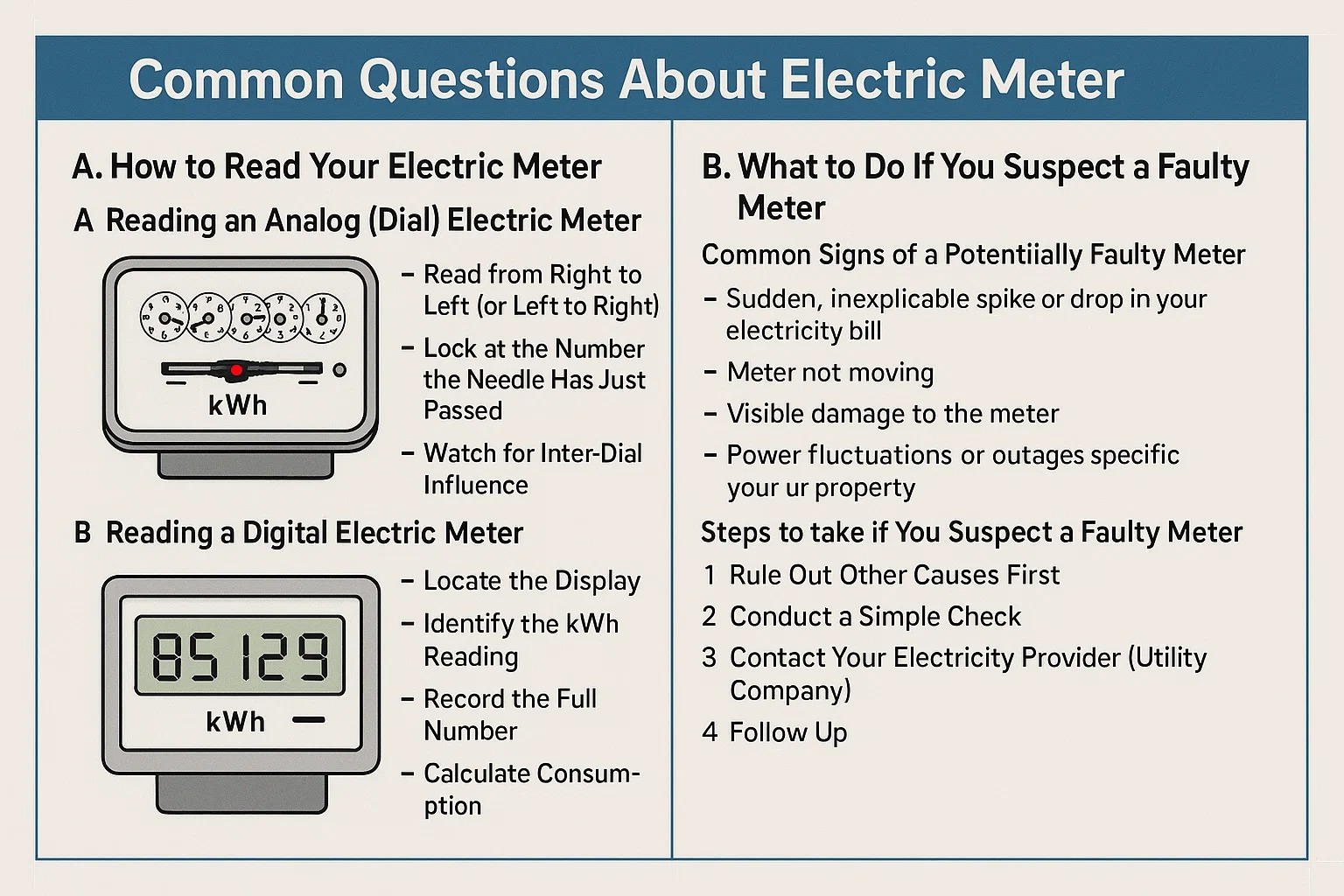
5. Conclusion
In an increasingly energy-conscious world, understanding the tools that measure our consumption is more important than ever. Electric meters, whether traditional analog or modern smart devices, are fundamental to our energy ecosystem, bridging the gap between electricity generation and individual use.
A. Recap of the Importance of Understanding Electric Meters
As we've explored, electric meters are far more than just components attached to our homes; they are critical instruments that underpin the entire electricity billing system and are increasingly vital for efficient energy management.
- Financial Clarity and Fairness: At their most basic, meters ensure that we are billed accurately for the precise amount of electricity we consume. Without them, pricing would be arbitrary, leading to unfair charges or inefficient flat rates. Understanding how to read your meter empowers you to verify your bills and track your expenditures.
- Empowering Energy Management: Modern smart meters have transformed this function by providing real-time data. This immediate feedback loop is invaluable, enabling consumers to identify energy hogs, adjust usage habits, and actively participate in reducing their carbon footprint and electricity costs. It shifts the paradigm from passive consumption to active management.
- Grid Stability and Modernization: For utility companies, the data collected by electric meters—especially smart meters—is indispensable. It allows for more accurate demand forecasting, efficient load balancing, quicker outage detection, and the implementation of dynamic pricing models like Time-of-Use rates. This capability is foundational to building a more resilient, efficient, and sustainable "smart grid" that can integrate renewable energy sources more effectively.
- Informed Decision-Making: Knowing the difference between analog, digital, and smart meters, and understanding their respective capabilities, helps consumers appreciate the evolving landscape of energy delivery and participate in discussions about energy policy and technology adoption.
In essence, an understanding of electric meters moves beyond merely paying a bill; it's about being an informed participant in your energy consumption, contributing to a more sustainable future, and ensuring financial accountability.
B. Encouragement to Stay Informed About Energy Consumption
The journey of understanding electric meters is just one step in becoming a more responsible and informed energy consumer. As technology continues to advance and global energy demands evolve, staying informed about your personal consumption and broader energy trends remains paramount.
We encourage you to:
- Regularly Monitor Your Usage: Utilize any online portals, in-home displays, or mobile apps provided by your utility to track your energy consumption. If you have an older meter, make it a habit to read it yourself periodically.
- Explore Energy-Saving Strategies: Apply the insights gained from monitoring to identify opportunities for reducing energy waste in your home or business. Small changes, collectively, can lead to significant savings and environmental benefits.
- Learn About Utility Programs: Inquire with your electricity provider about specific programs available in your area, such as time-of-use rates, demand response initiatives, or energy efficiency rebates. These can often lead to further savings and help the grid operate more effectively.
- Stay Updated on Energy Technology: Keep an eye on advancements in smart home technology, renewable energy solutions, and grid modernization efforts. These innovations will continue to shape our energy future.
By taking an active interest in your energy consumption, you not only gain greater control over your utility bills but also contribute to the collective effort of creating a more efficient, sustainable, and resilient energy future for everyone.

 English
English 简体中文
简体中文












